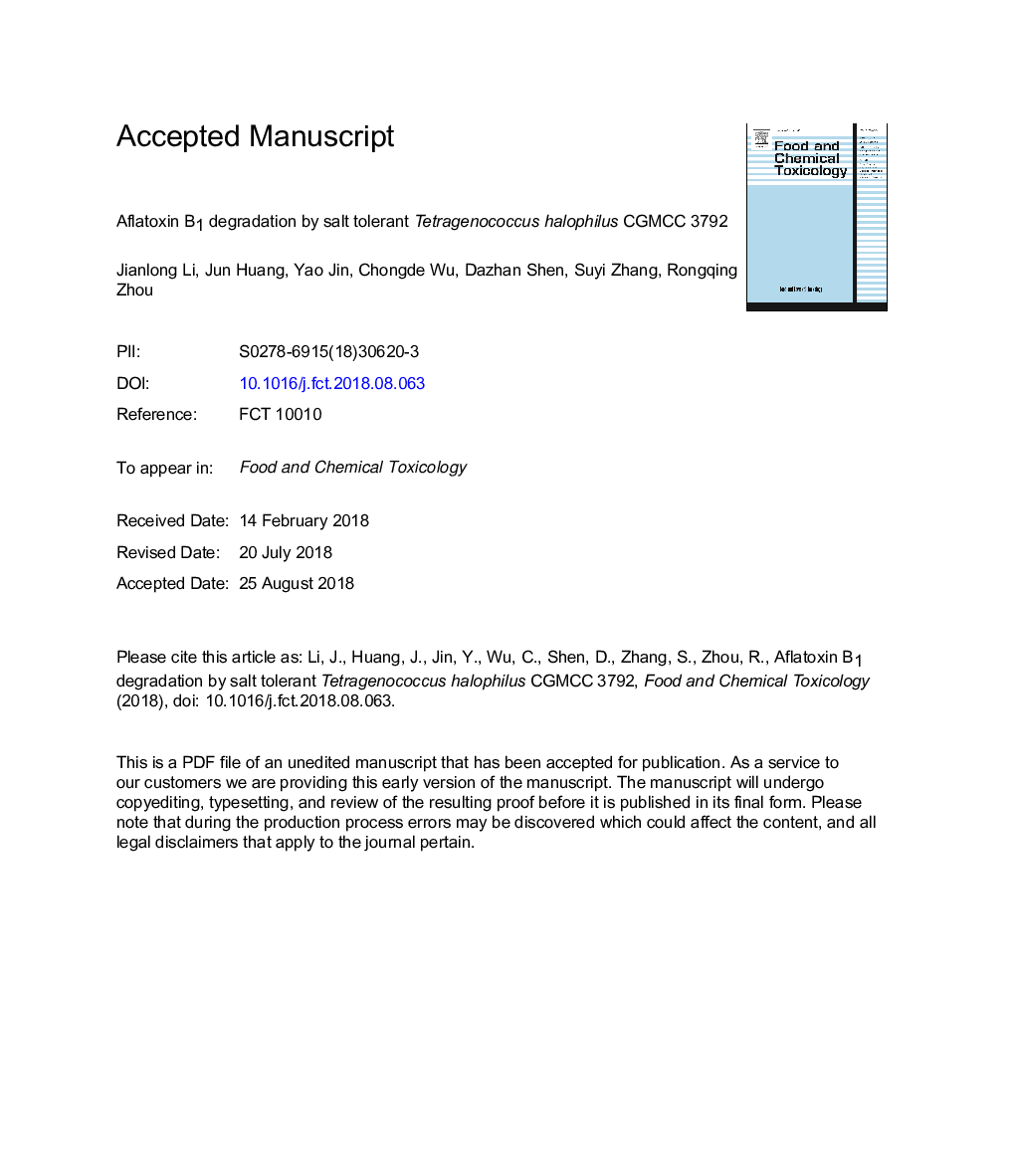| Article ID | Journal | Published Year | Pages | File Type |
|---|---|---|---|---|
| 11033919 | Food and Chemical Toxicology | 2018 | 26 Pages |
Abstract
This study explores aflatoxin B1 (AFB1) degradation by salt tolerant Tetragenococcus halophilus CGMCC 3792 (T. halophilus CGMCC 3792). Six non-toxic degradation products of AFB1 were identified by liquid chromatography/time-of-flight mass spectrometry (LC/TOF-MS), including m/z 243.06 (C14H10O4), 361.09 (C18H16O8), 229.09 (C14H12O3), 277.14 (C16H20O4), 217.12 (C14H16O2), 221.15 (C14H20O2). Two pathways were proposed based on molecular formulas and MS/MS spectra, and the final degradation product was m/z 221.15 (C14H20O2). The degradation ratio of active cell component (66%) and intracellular component (57%) was significantly higher than extracellular component (14%). AFB1 degradation ratio of intracellular component, initially at around 60%, was decreased to 32% after proteinase K treatment, and to 7% after heating, to 9% after proteinase K plus SDS treatment, and to 16% after TFA treatment. It suggests that the AFB1 removal mainly resulted from enzyme biodegradation. The degradation ratio was 92% in AFB1 polluted soy sauce mash. The high degradation ratio of AFB1 by T. halophilus CGMCC 3792 indicates its great potential for application in oriental fermentation condiment process.
Related Topics
Life Sciences
Agricultural and Biological Sciences
Food Science
Authors
Jianlong Li, Jun Huang, Yao Jin, Chongde Wu, Dazhan Shen, Suyi Zhang, Rongqing Zhou,
